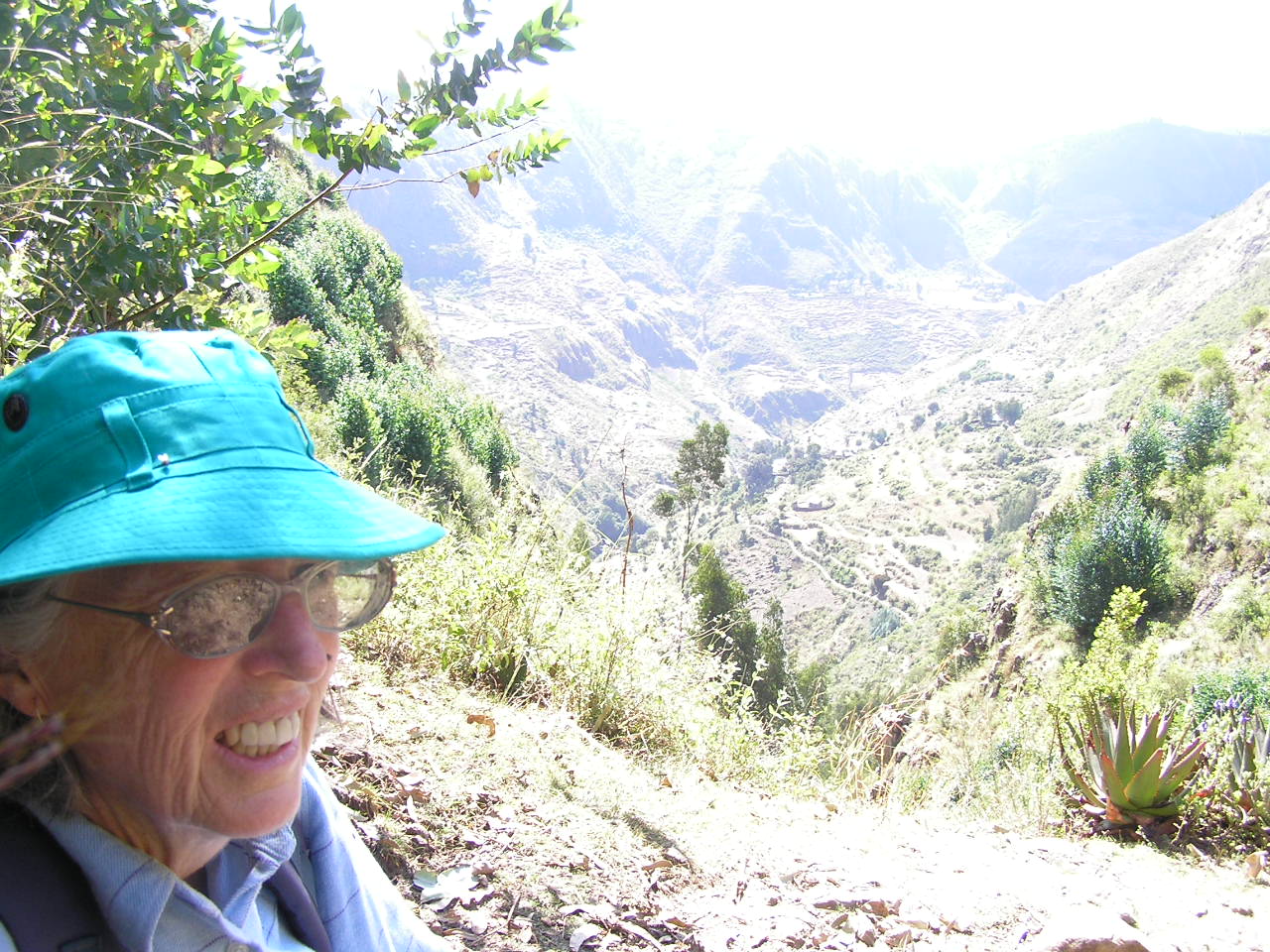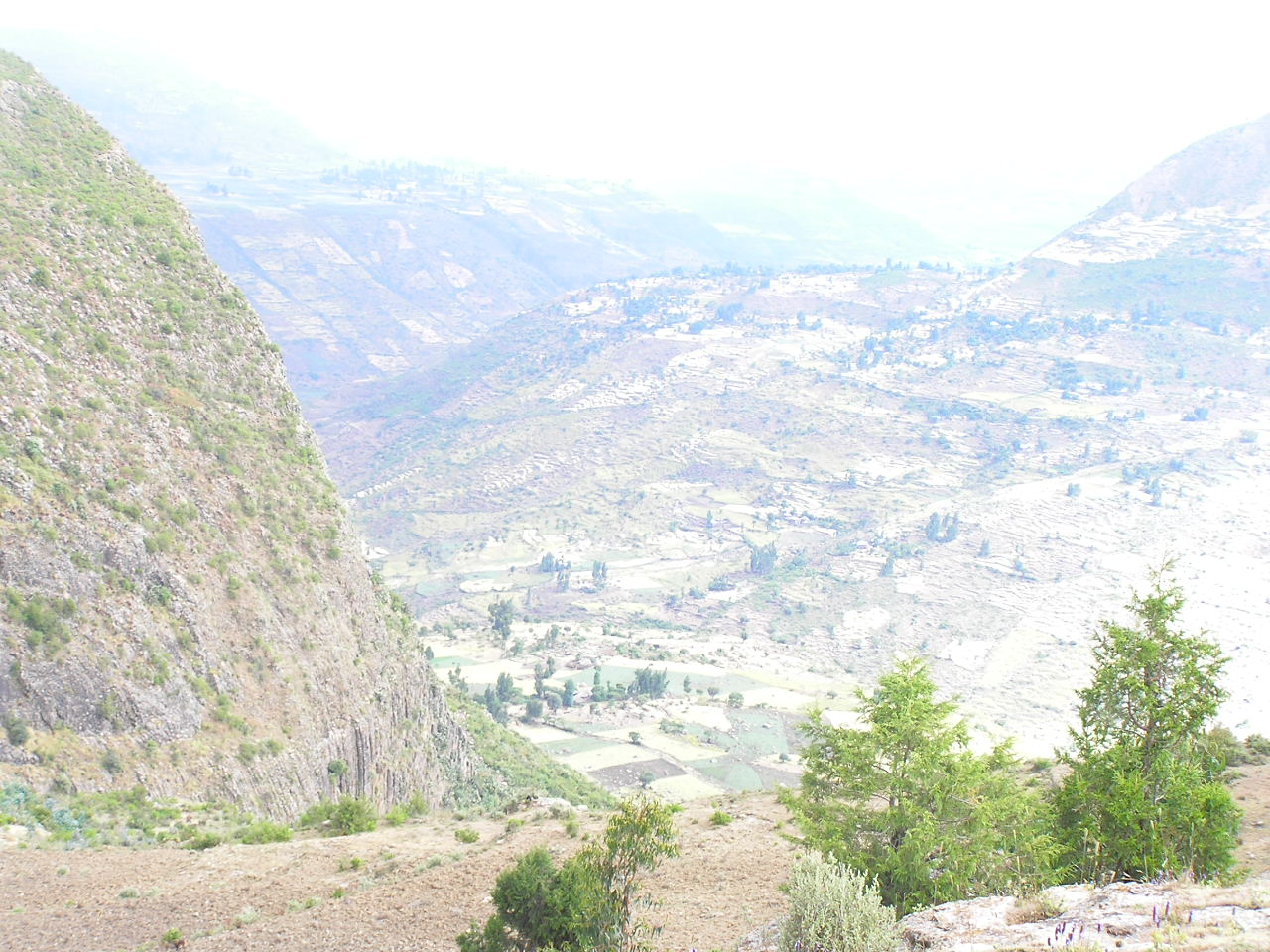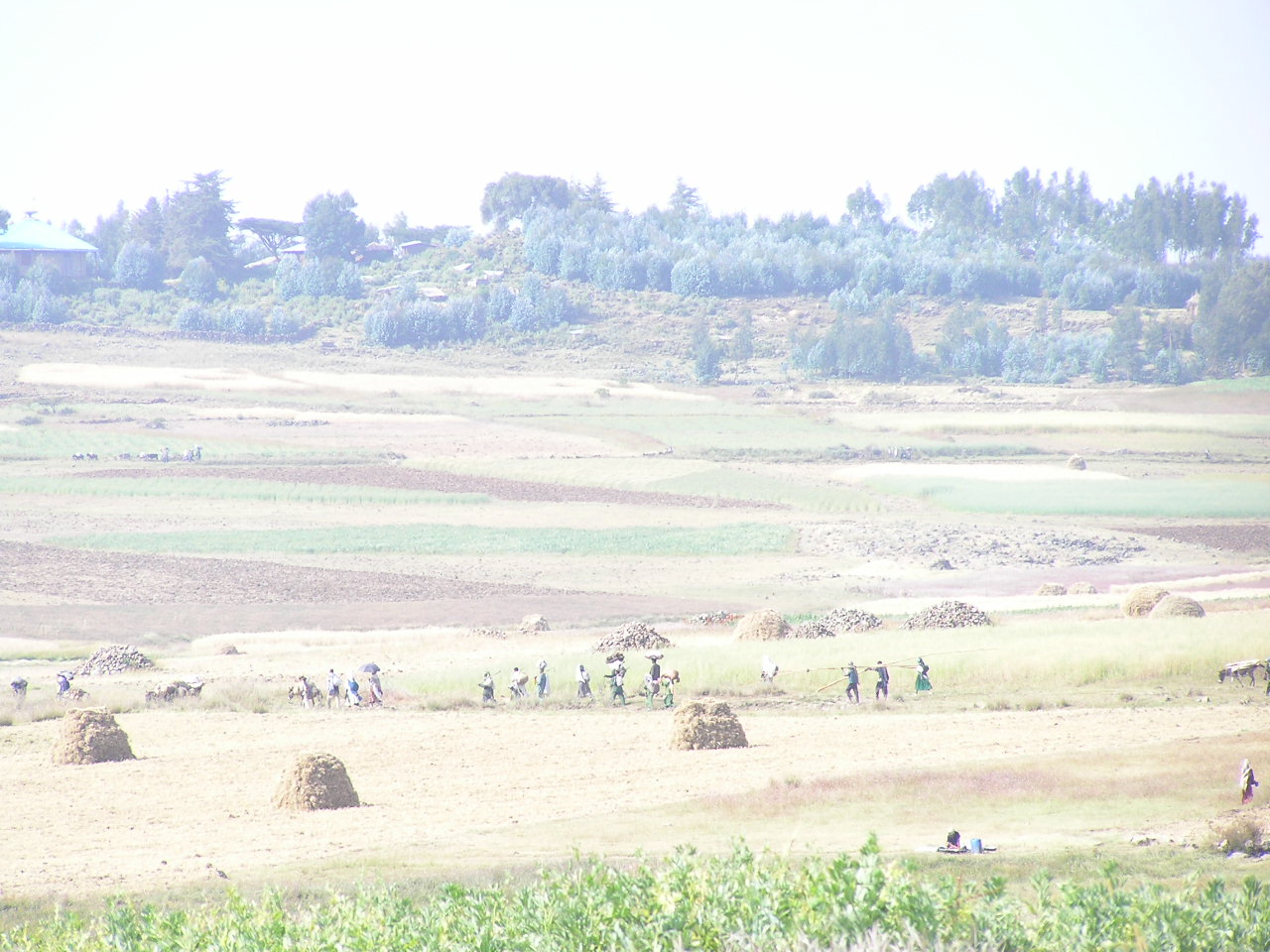Habitats
This photograph shows the top of the gorge, from a position about one quarter of the way down. Nearby we could expect to see brown rumped seed eaters, yellow breasted sunbirds and sparrows. The cliff in the distance (maybe two miles), is a roost for vultures and eagles.

This photograph shows the university. Our house is in the distant background. Here we might expect to see Isabelline? wheatears, groundscraper thrushes, thekla larks and in the flatter,greener areas, wattled ibises.

This is the bottom of the gorge. Although it may not be more than two miles from the centre of Debre Birhan as the crow flies, it is a difficult scramble to get there. I have only made it twice. Among the mature trees to the left of the 'W' waterfall I have seen bulbuls, a paradise flycatcher, hemprich hornbill, yellow bellied sunbirds and a redstart like bird. On the cliffs there are white winged cliff chats. In the rough pasture on the right I have seen Ruppel's black chat. There may be yellow wagtails by the river.

On the gorge lip I have seen yellow-breasted-sunbirds and brown-rumped seed-eaters. Vultures and eagles roost on the cliffs below. Vultures, possibly eagles, falcons and kestrels soar along the cliff edge. Hemprich hornbills rest in nearby trees.

On farmland like this there may be pied wheatear, Isabelline(or European) wheatear, thekla lark, black headed siskins, dwarf ravens, wattled ibis.

The lake is a dammed reservoir for Debre Birhan. There are Egyptian Goose, Blue Winged Goose, little grebes, cormorants, Greater Pelicans, ruffs, many plovers and waders, kites and we have even seen fish eagles. There are wheatears of several species, thekla larks and Ethiopian siskin in the grass. The only common chat are moorland chats.

In the irrigated farmland below the lake there are many browsing geese and cattle egrets.
